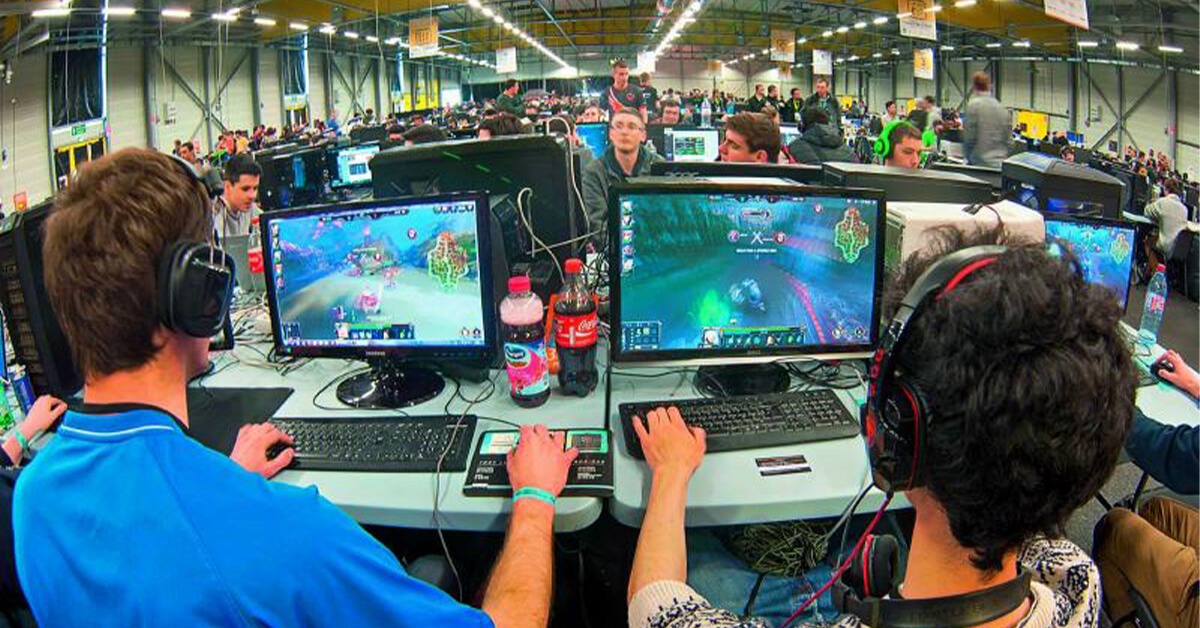Is Gaming the Biggest Entertainment Industry?
Entertainment has evolved significantly in today’s digital age, with gaming emerging as a major player in the global market. The gaming industry has experienced remarkable growth over the past decade, driven by technological advancements, changing consumer behaviors, and global connectivity. Let’s delve into the projected growth of the gaming market from USD 230.79 billion in 2023 to USD 492.5 billion by 2031, growing at a compound annual growth rate (CAGR) of 13.4% in the forecast period of 2024-2031. This article explores whether gaming has become the largest sector in the entertainment industry, examining its growth, impact, and future prospects.
The Rise of Gaming
Historical Evolution
From its inceptional beginnings, gaming has experienced a remarkable evolution.In the early days of video games, the 1950s and 1960s saw foundational developments with A.S. Douglas’s tic-tac-toe game “OXO,” Steve Russell’s multi-computer game “Spacewar!,” and Ralph Baer’s creation of the Brown Box, the first home console. The 1970s and 1980s marked the rise of arcade and home gaming, starting with Atari’s “Pong” in 1972, which was inspired by an Odyssey game, and leading to the Atari 2600 in 1977, a groundbreaking home console that featured interchangeable cartridges and sparked the growth of the video game industry.
From humble beginnings with arcade games and early consoles like the Atari, to the revolutionary advancements in graphics, gameplay, and online connectivity, the industry has continually pushed boundaries.
Technological Advancements
Technological innovation remains a key driver of growth in the gaming industry. Advancements in graphics capabilities, processing power, and connectivity have enabled developers to create more immersive and engaging gaming experiences. The evolution of virtual reality (VR) and augmented reality (AR) technologies has further expanded the boundaries of what is possible in gaming, attracting a broader audience.
Market Size and Revenue
Today, gaming rivals and often surpasses traditional entertainment sectors such as film and music in revenue generation. The global gaming market reached an estimated $244.22 billion in 2024, showcasing its immense financial impact. This growth is fueled by diverse revenue streams including game sales, in-game purchases, subscriptions, and esports.
Comparing to Other Entertainment Industries
Film Industry
Revenue in the cinema market is projected to hit $79.22 billion in 2024. Despite this positive outlook, some cinema companies have experienced mixed results. For instance, AMC Theatres is anticipated to report total revenue of approximately $951.4 million in the first quarter of 2024, a slight decrease from $954.4 million in the same period of 2023. Similarly, Cinemark is expected to show a total revenue of $579.2 million, reflecting a 5.2% decline compared to the previous year. Traditionally, Hollywood has dominated the entertainment landscape, with blockbuster movies commanding global attention and revenue. However, gaming’s revenue now competes directly with major film releases, particularly with the rise of blockbuster game titles and franchises.
Music Industry
Statista forecasts that the music industry’s revenue will reach $14.34 billion in 2024, marking a 13.8% increase from the previous year.Music, too, has seen significant shifts with the advent of digital platforms and streaming services. While concerts and album sales remain lucrative, gaming’s integration of music into gameplay and virtual concerts has created new revenue opportunities and expanded audience engagement.
Impact of Technological Advancements
Graphics and Immersion – Is Gaming the Biggest Entertainment Industry?
Technological advancements in graphics, virtual reality (VR), and augmented reality (AR) have transformed gaming into a visually stunning and immersive experience. Players can now engage in lifelike simulations and explore expansive virtual worlds, enhancing the appeal and marketability of games.
Connectivity and Social Interaction
Online gaming has revolutionized social interactions, enabling players from around the globe to connect and compete in real-time. This social aspect has not only boosted engagement but also paved the way for esports and streaming platforms, where gamers showcase their skills to vast audiences.
Increasing Mobile Gaming Market
The proliferation of smartphones and tablets has democratized gaming, making it more accessible to a global audience. Mobile gaming, in particular, has seen explosive growth due to its convenience and affordability. Games like “Fortnite” and “PUBG Mobile” have demonstrated the potential for mobile platforms to generate significant revenue through in-game purchases and advertisements.
Rise of Esports and Streaming – Is Gaming the Biggest Entertainment Industry?
Esports, or competitive gaming, has grown into a multi-billion-dollar industry of its own. Tournaments attract millions of viewers worldwide, generating revenue from sponsorships, media rights, and advertising. Streaming platforms like Twitch and YouTube Gaming have become pivotal in showcasing esports events and connecting gamers with their audiences in real-time.
Is kenza layli real ? World’s First Miss AI | Maya (mayathevoice.com)
Cryptocurrencies and Gaming
Introduction of Cryptocurrencies in Games – Is Gaming the Biggest Entertainment Industry?
Cryptocurrencies have begun to make inroads into gaming, offering new avenues for monetization and in-game economies. Games like “CryptoKitties” and “Decentraland” leverage blockchain technology to create unique digital assets and virtual environments, where players can buy, sell, and trade items using cryptocurrencies.
NFTs and Virtual Assets
Non-fungible tokens (NFTs) have also gained prominence in gaming, allowing players to own and trade rare in-game items and digital collectibles securely. This innovation has the potential to revolutionize ownership within gaming communities and create new revenue streams for developers and players alike.
Future Trends and Predictions
Continued Growth
The gaming industry shows no signs of slowing down, with projections suggesting continued growth in revenue and global reach. Emerging markets, advancements in mobile gaming, and the integration of emerging technologies like artificial intelligence (AI) and cloud gaming are expected to drive this expansion.
Convergence with Other Industries
Gaming’s influence extends beyond traditional entertainment, intersecting with education, healthcare, and even architecture through gamification and VR applications. This convergence underscores gaming’s versatility and potential to shape future industries and societal norms.
Conclusion
In conclusion, gaming has indeed become one of the largest sectors within the entertainment industry, rivaling traditional giants like film and music in revenue and cultural impact. With ongoing technological innovations, the integration of cryptocurrencies, and a growing global audience, gaming is poised to maintain its dominance and continue evolving in unforeseen ways. As we look ahead, the intersection of gaming with emerging technologies and industries promises an exciting future for both players and creators alike.
Whether you’re a gamer, developer, investor, or simply curious about the future of entertainment, understanding the dynamics of this dynamic industry can provide valuable insights into its unparalleled growth and influence.




